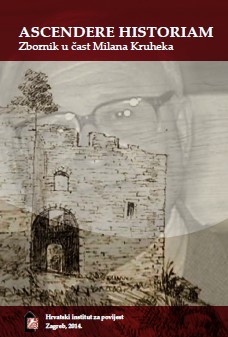Najstarij i prikazi hrvatskih zastava iz 16. i 17. stoljeća. Jedinstveni izvori za proučavanje povijesti hrvatskih državnih i nacionalnih simbola
The Earliest Portrayals of the Flags of Croatia from the Sixteenth and Seventeenth Centuries: Extraordinary Sources for the History of Croatian National Symbols
Author(s): Géza Pálffy
Subject(s): Cultural history, Political history, 16th Century, 17th Century, Politics and Identity
Published by: Hrvatski institut za povijest
Keywords: national symbols; flags; Croatia; Kingdom of Hungary-Croatia; coronation of the king of Hungary; the countries of Holy Crown of Hungary (Länder der Stephanskrone); aristocracy; the treasury;
Summary/Abstract: The essay undertakes to enrich significant new research results concerning Croatian national symbols in connection with the less extensively researched sixteenth and seventeenth centuries: it introduces the earliest „copies” of the Croatian flag to the Croatian scholarly audience. Not only had the flag of Croatia an important role at the inaugurations (installatio) of Croatian-Slavonian bans but it was also present at Hungarian coronations and funerals of common Hungarian and Croatian rulers from the Habsburg dynasty after 1526, since the Kingdom of Croatia was one of the countries of Holy Crown of Hungary. The author has found several flags of Croatia represented in manuscripts and printed documents from the sixteenth and seventeenth centuries – among others in Emperor Maximilian I’s (1493–1519) lately restored Triumphzug (1512–1515, Figure 1), in a colored, printed volume about the funeral ceremony of Emperor Ferdinand I (1556–1564) and King of Hungary and Croatia in Vienna in August, 1565 (Figures 6–7) and in the manuscript of the ordinance of Hungarian King Ferdinand II’s (1619–1637) coronation (Ordo coronationis) in Pozsony (today Bratislava, Slovakia) on July 1, 1618 (Figures 2–4). The flag portrayals of the latter served as models to the coronation flags made for the ceremony of the last Hungarian ruler, Charles IV (1916–1918) in late December, 1916 (Figures 11–13). Along with these instances lately the Hungarian historian successfully discovered the earliest remaining original flag of the Kingdom of Croatia so far (Figures 9–10). This was carried by a young Hungarian aristocrat, Count László Esterházy (1626–1652) at the Hungarian coronation of Ferdinand IV Habsburg in Pozsony on June 16, 1647. That is why it was preserved in the famous treasury of the family, which is nowadays kept and owned by Esterházy Privatstiftung in Forchtenstein Castle, Burgenland in Austria. Hopefully the essay also proves that a joint exploration and interpretation of the eight-century-old Hungarian-Croatian common history is only possible by close professional cooperation and by introducing the subsisting common Central European cultural heritage to each other.
Book: Ascendere historiam: Zbornik u čast Milana Kruheka
- Page Range: 327-346
- Page Count: 20
- Publication Year: 2014
- Language: Croatian
- Content File-PDF

